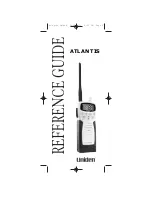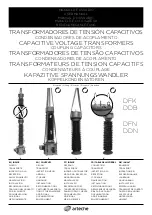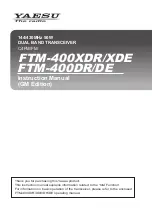
ARTEX PRODUCTS / ACR ELECTRONICS, INC.
DESCRIPTION, OPERATION, INSTALLATION AND MAINTENANCE MANUAL
ELT 1000 (P/N: A3-06-2749-1)
Y1-03-0259 Rev. U
Company Confidential
Page 42 of 62
3.
Antenna
A.
General
1)
Use only antennas approved for use with the ARTEX ELT 1000. The ELT will not work properly without being
connected to an antenna for which it was designed.
2)
Verify the antenna selected matches the requirements of the specific installation. Considerations include
aircraft maximum rated speed, location restrictions, and any other considerations specific to the installation.
3)
Per FAA TSO C126a and ETSO-C126a, ELTs must be installed with only the components that have been
certified by either the manufacturer of the unit or via a Type Certificate authorization done by the airframe
manufacturer. Contact ARTEX Technical Support for further information regarding component and accessory
selection.
B.
Location
1)
Select a suitable location for the antenna.
a)
Place the antenna in a location where the antenna can be installed vertically and with at least 32 inches (0.8
m) of clearance from other antennas, particularly VHF, in accordance with RTCA/DO-204, § 3.1.10.2.
NOTE:
Detailed location guidance may be found in AC 43.13-2, Chapter 3, which recommends a
minimum distance of 36 inches (0.9 m) clearance between antennas.
C.
Installation General Info
NOTE:
Per FAA TSO C126b, “Those installing this article, on or in a specific type or class of aircraft,
must determine that the aircraft installation conditions are within the TSO standards. TSO
articles must have separate approval for installation in an aircraft.”
CAUTION:
ARTEX CANNOT VERIFY APPROPRIATE ANTENNA SELECTION PER EACH
AIRFRAME. MANY CONSIDERATIONS MUST BE EVALUATED DURING THE
ANTENNA SELECTION PROCESS, SUCH AS DYNAMIC / STATIC LOADING. CERTAIN
SPECIAL CONSIDERATIONS NEED TO BE ACCOUNTED FOR SUCH AS AIRFLOW
SPEED OVER THE ANTENNA SURFACES (FRONTLOAD / SIDELOAD). CONSULT FAA
AC 43.13-2 AND AIRFRAME MANUFACTURER FOR ANTENNA INSTALLATION
PRACTICES AND REQUIREMENTS. CONTACT ARTEX TECHNICAL SUPPORT FOR
MORE INFORMATION.
WARNING:
PER FAA AC 43.13-2: "PAINTING AN ANTENNA OR APPLY PROTECTIVE COATINGS OR
DEVICES THAT ARE NOT APPROVED ARE NOT ALLOWED [UNDER THIS AC]. PAINT IS AN RF
DE-TUNER. IF AN ANTENNA IS PAINTED IN THE FIELD, PAINT TYPE AND PAINT THICKNESS
PRESENT UNCONTROLLED VARIABLES THAT WILL AFFECT AN ANTENNA'S PERFORMANCE
AND MAY RESULT IN THE ANTENNA NO LONGER MEETING ITS SPECIFICATIONS OR
TECHNICAL STANDARD ORDER (TSO)."
ARTEX DOES NOT AUTHORIZE OPERATORS OR
OUTSIDE MAINTENANCE ORGANIZATIONS TO PERFORM FIELD REPAIRS OR
PAINTING.
CONTACT ARTEX TECHNICAL SUPPORT FOR MORE INFORMATION.
NOTE:
Refer to the airframe manufacturer’s written instructions and AC 43.13-2, Chapter 3 for
antenna installation practices and requirements.
1)
Prepare antenna mounting surface to ensure good ground contact.
2)
Install a doubler plate if necessary to meet rigidity requirements. A 20 lb (9.1 kg) force applied to the antenna
in all directions should not cause an appreciable distortion in the aircraft skin.
















































